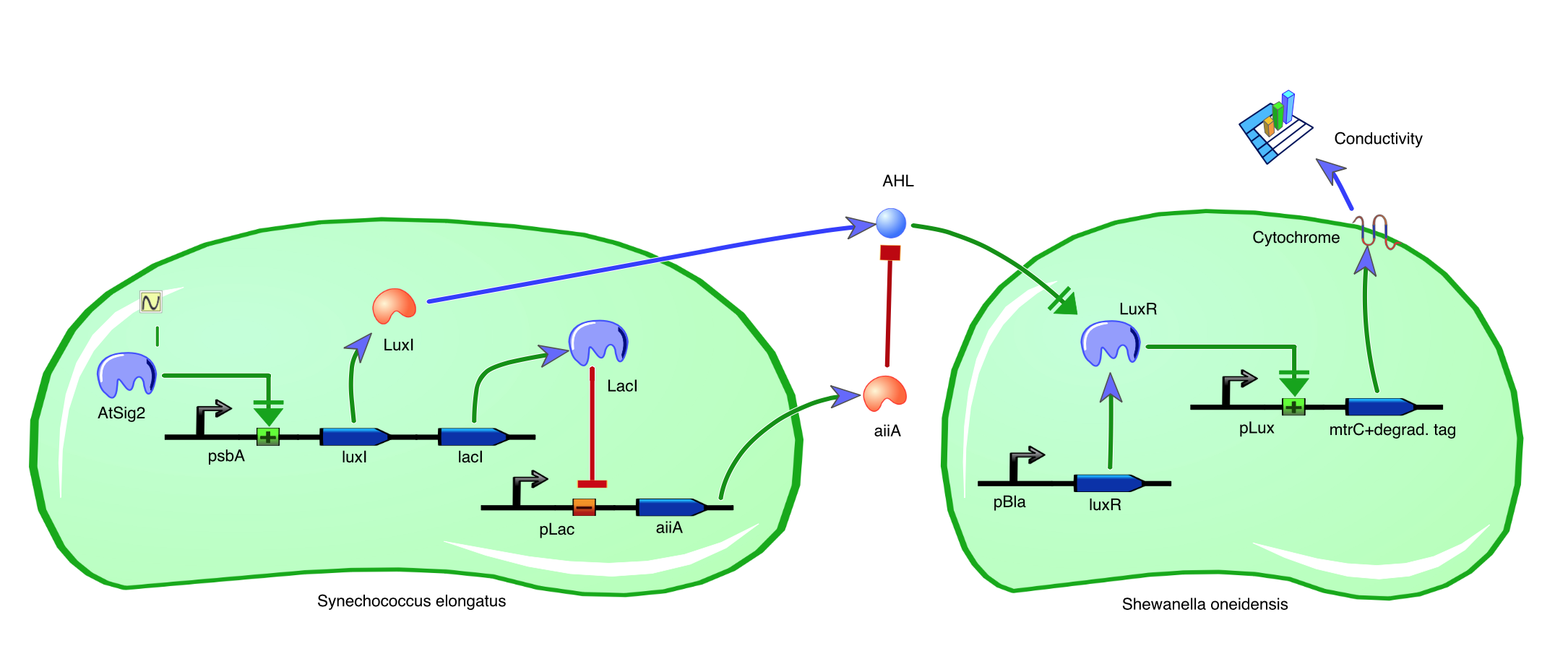Team:Uniandes Colombia/Project
Project
The aim of this proyect is to engineer a bio-digital clock as a proof-of-concept project dealing with the integration of biological and electronic circuits. We plan to modify the circadian clock Kai protein system of cyanobacteria Synechococcus elongatus1 by hooking it to the AHL-producing half of the Lux quorum sensing system of Vibrio fischerii. The sensing portion of the Lux system will reside in modified Shewanella oneidensis, engineered to produce changes in its electrical resistance in response to changing levels of AHL using this species's control of cytochrome production2. Both the circadian clock of S. elongatus and the electrical regulation of S. oneidensis have been worked on separately by previous iGEM teams, however, we shall improve on them by incorporating feedback control systems to reduce their response time and noise, including an enzyme that degrades AHL that activates when the system is “turned off” . Finally, another key component of our project is the design and construction of the eletcronic hardware necessary to measure S. oneidensis's changes in electrical conductance and act as an interface between this biological circuit and any electronic circuit it is to be coupled with, in this example, a digital clock.
1. Chabot, J., Pedraza, J., Luitel, P., & Oudenaarden, A. (2007). Stochastic gene expression out-of-steady-state in the cyanobacterial circadian clock. Nature, 1249-1252. 2. Xiong, Y., Chen, B., Shi, L., Fredrickson, J. K., Bigelow, D. J., & Squier, T. C. (2011). Targeted protein degradation of outer membrane decaheme cytochrome MtrC metal reductase in Shewanella oneidensis MR-1 measured using biarsenical probe crash-edt2. Biochemistry, 50(45), 9738-9751. 3. https://2008.igem.org/Team:Harvard 4. https://2012.igem.org/Team:Cornell 5. https://2012.igem.org/Team:UC_Chile
